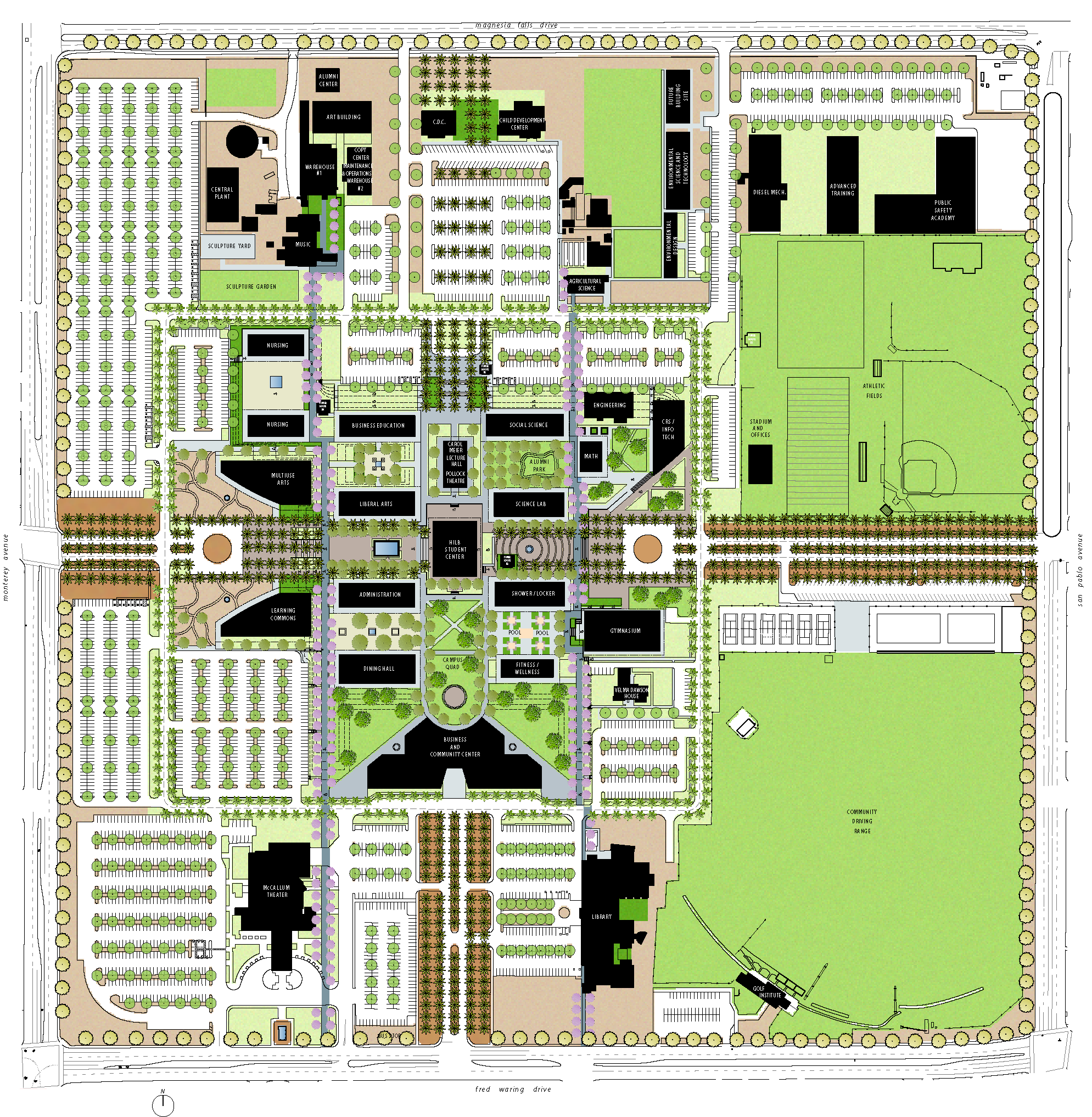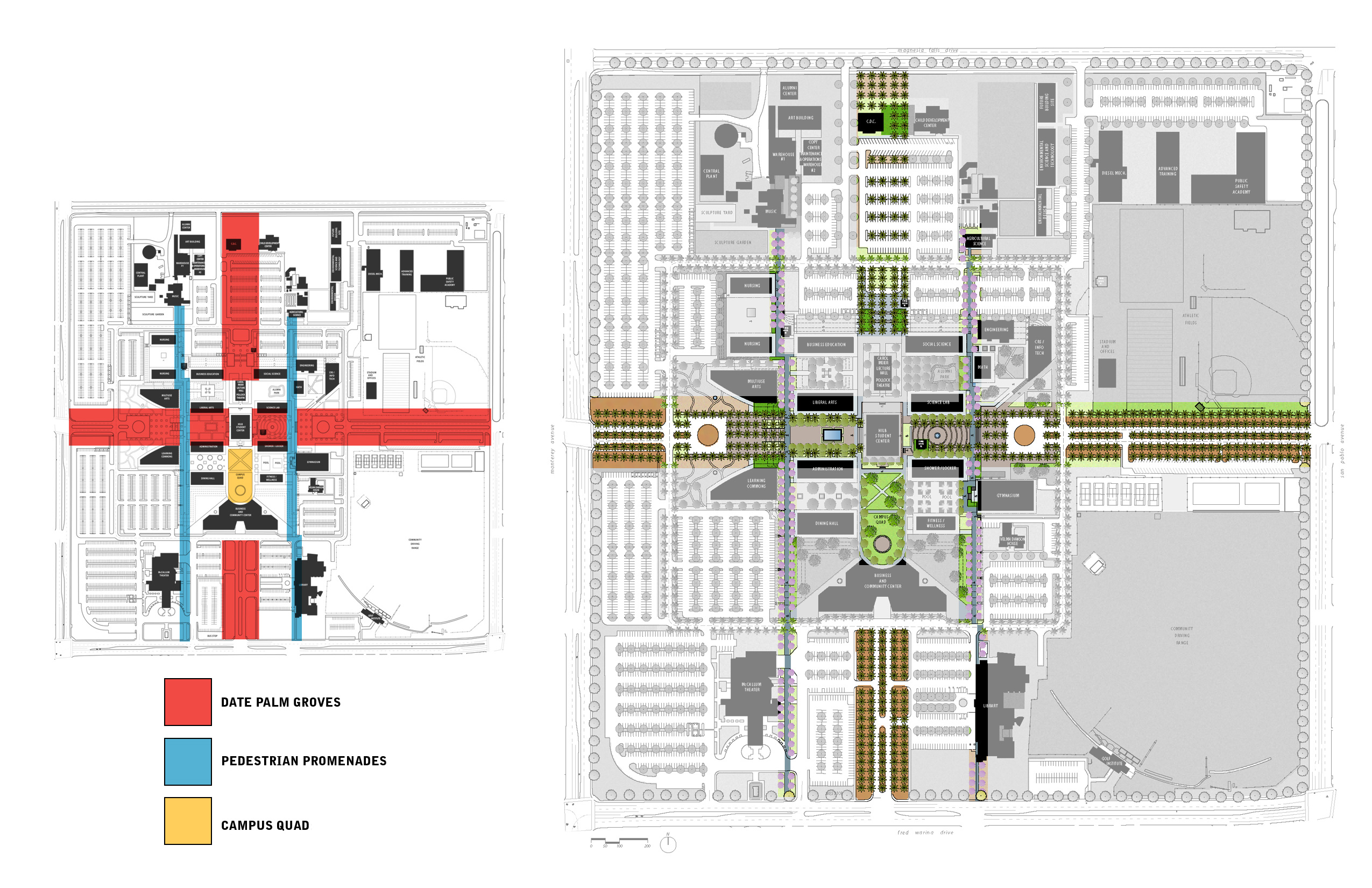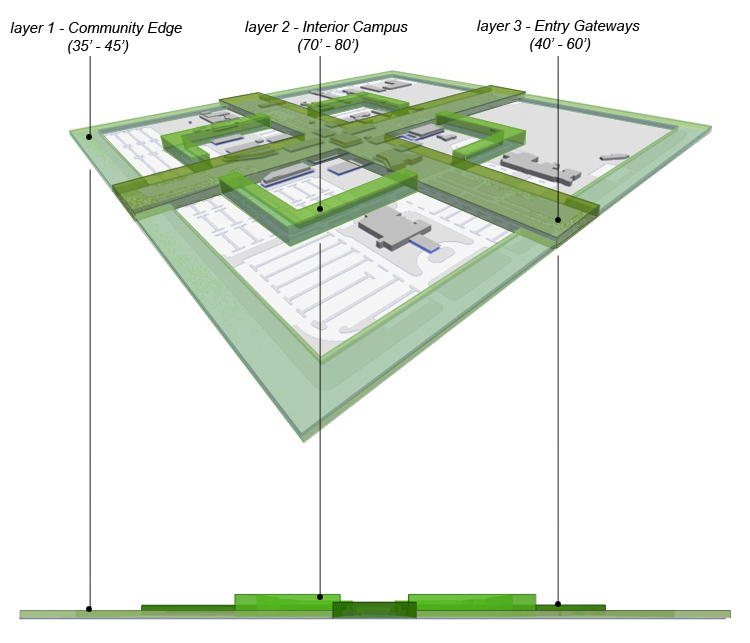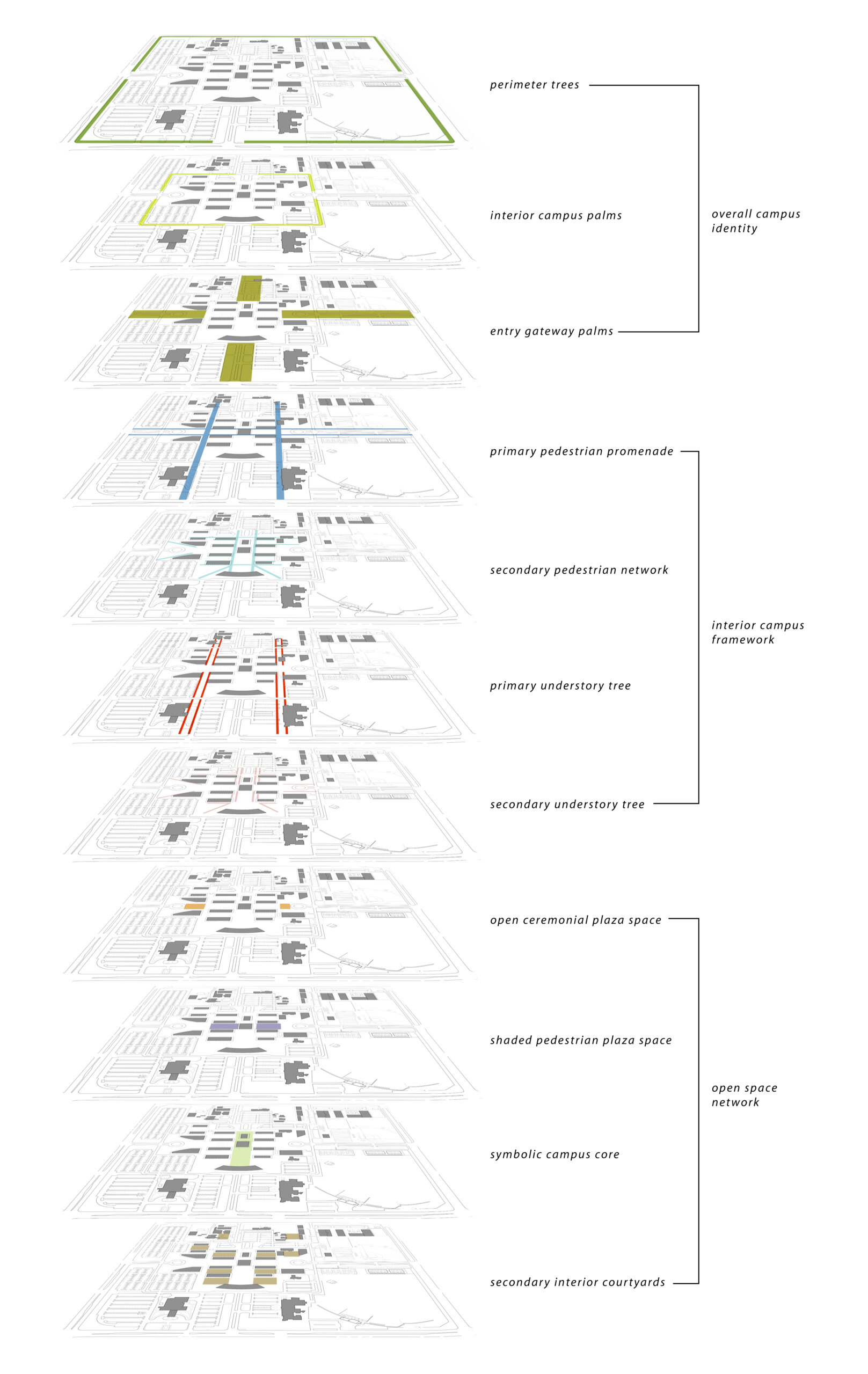Being the first higher learning institution in the Coachella Valley, the College of the Desert has established itself as a leader in education and partnership with their numerous ties to the community. With the robust population growth within the valley, and the continuous expansion of the campus, the landscape master plan establishes a development strategy to further enhance the college’s identity and utility within the Coachella Valley.
Once the site of Date Palm groves, the original 13 acre campus was planned by the mid-century modernist John Carl Warneke. The original buildings were located with a strong geometrical alignment which has somewhat dissolved over the past fifty years as continuous building additions have expanded the campus to over 160 acres. The new master plan seeks to restore a strong organizational framework that collectively unifies and reinforces the unique identity of the college. Furthermore, the campus master plan continues the college’s mission to reduce natural resource consumption and improve the local environment through utilizing local materials. The campus sets an example within the community by using native plants that significantly reduce water demands and promotes a sustainable aesthetic for the Coachella Valley. The master plan also incorporates an integrated storm water drainage plan that significantly reduces the amount of pollutants that flow off-site by utilizing bio-retention basins, and reducing the overall impervious area of the campus. On-site pollutants from parking lots are filtered through the landscape and ultimately recharge groundwater aquifers.
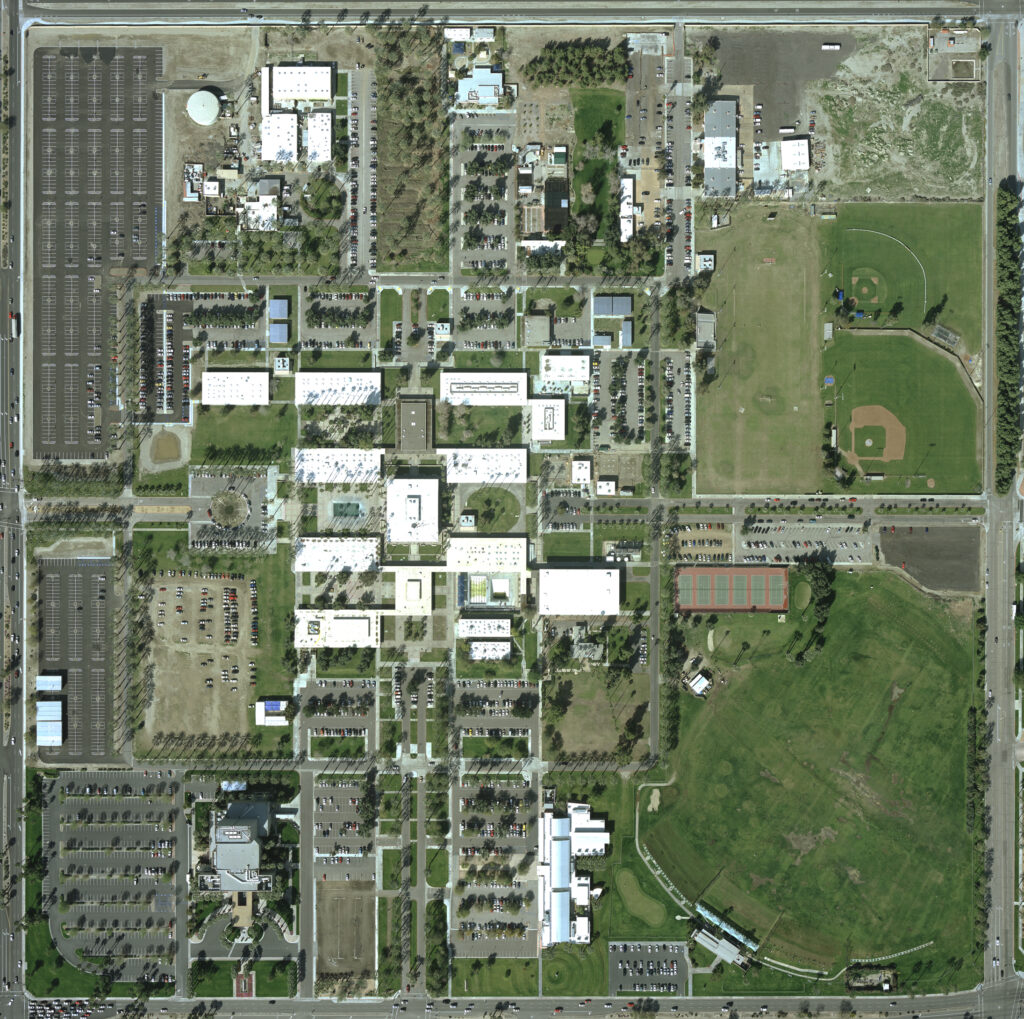
The campus framework strategy is the primary organizing element which contextually positions the overall campus within the surrounding community, while defining clear circulation hierarchies and spatial networks. Unifying elements such as a campus wide art program, fountains, paving and planting materials visually link one end of campus to the other. A complimentary palette of materials define student gathering areas such as courtyards and plazas courtyards that extend building typologies (academic, recreational, and social) into the campus landscape.



